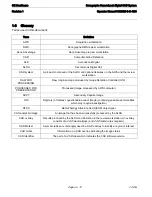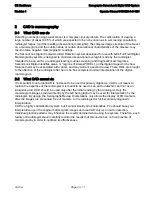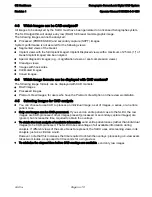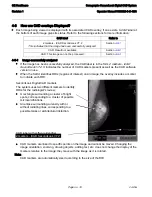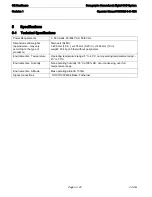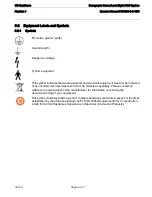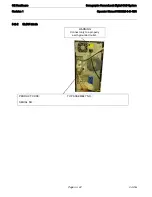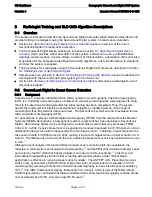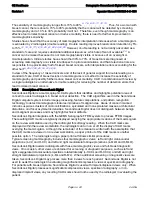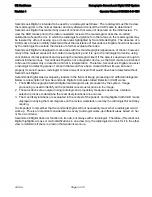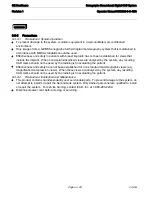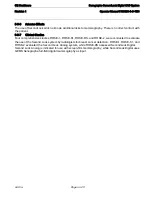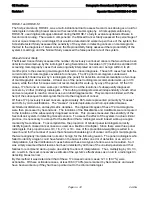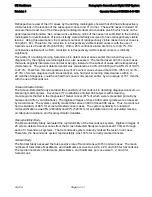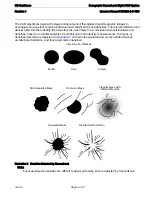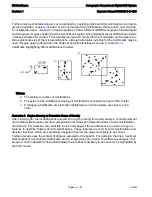
Page no. 24
CAD.fm
GE Healthcare
Senographe SecondLook Digital CAD System
Revision 1
Operator Manual 5189820-5-C-1EN
The sensitivity of mammography ranges from 70% to 90%.
,
,
,
,
. Thus, for a woman with
breast cancer, there is about a 70% to 90% probability that her cancer will be detected by screening
mammography and a 10% to 30% probability it will not. Therefore, even though mammography is an
effective tool to detect breast cancer and reduce mortality, there is need for further improvement in
mammographic sensitivity.
Studies have shown that the accuracy of mammographic interpretation increases when a mammogram
is evaluated by 2 radiologists (double reading). Double reading improves breast cancer detection by 5%
to 15%.
,
,
,
,
,
However, double reading is not currently advocated as a
standard of care and requires substantial additional resources, which are often not available.
cancer can be missed because it is not mammographically visible or because of an oversight or
misinterpretation. Clinical studies have shown that 30% to 70% of breast cancers diagnosed at
screening mammography are visible in retrospect on prior examinations, and that detection errors are
responsible for approximately half of missed breast cancers, with interpretation errors accounting for the
other half.
,
,
,
,
In view of the frequency of missed cancers and of the lack of general support for double reading as a
standard of care, CAD of breast lesions on mammograms is a method to increase the sensitivity of
mammography and possibly further reduce breast cancer mortality. CAD in combination with review by
a single radiologist is an alternative to double reading for reducing the number of detection errors that
lead to missed breast cancers.
6-2-2
Description of SecondLook Digital
SecondLook Digital is a mammographic CAD system that identifies and highlights potential areas of
concern to assist radiologists in breast cancer detection. The CAD algorithms used in the SecondLook
Digital computer system include image processing, feature computations, and pattern recognition
technology to detect mammographic features indicative of malignancies. Areas of concern marked
include suspicious clusters of microcalcifications, spiculated and non-spiculated masses, architectural
distortions, and focal asymmetric densities. SecondLook Digital does not distinguish between benign
and malignant processes and may highlight technical artifacts.
SecondLook Digital integrates with the GEMS Senographe FFDM system to process FFDM images.
The resulting CAD marks are typically displayed overlying the appropriate locations of the mammogram
on the review workstation used by the radiologist for softcopy reading. When the CAD marks are
displayed within the review workstation, the radiologist can turn on or off the display of CAD marks
overlying the mammogram. Although the remainder of this manual is written with the assumption that
the CAD marks are viewed on a review workstation, a paper printout of the CAD marks is another
possible option. The radiologist using a paper printout follows similar procedures.
Typical screening mammography includes four mammographic views: left and right craniocaudal
projections (L-CC and R-CC) and left and right mediolateral oblique projections (L-MLO and R-MLO).
SecondLook Digital assists radiologists with these mammographic views and full-breast diagnostic
views. On occasion, other views are obtained for screening or diagnostic purposes, such as left and
right exaggerated craniocaudal projections rotated laterally (L-XCCL and R-XCCL) and left and right
straight mediolateral projections (L-ML and R-ML). When additional screening or diagnostic views are
taken, SecondLook Digital may process more than 4 views for each patient. SecondLook Digital is not
used to assist the radiologist in evaluating magnification/compression views or specimen radiography.
For patients with breast implants, SecondLook Digital is used with implant-displaced views only. When
SecondLook Digital processes magnification/compression views, specimen radiography, or non-
displaced implant views, any resulting CAD marks should not be used by the radiologist in evaluating the
patient.

